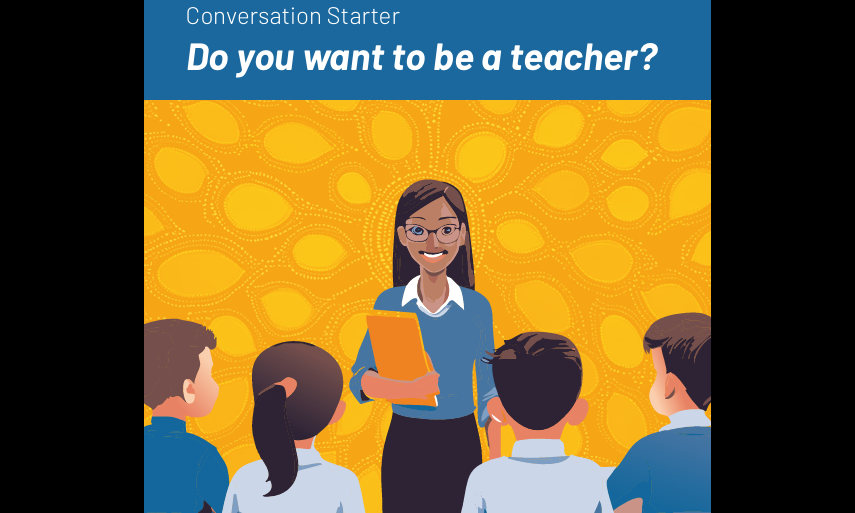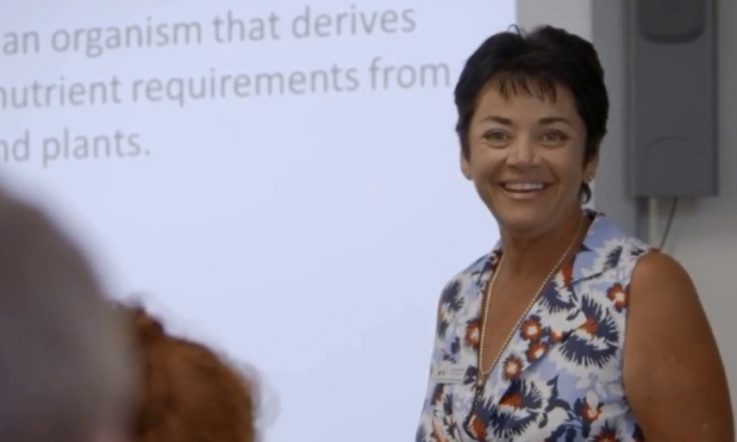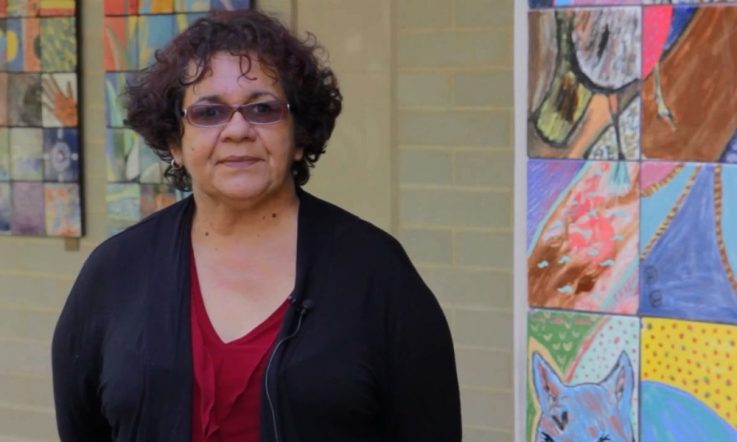‘Do you want to be a teacher?’ Is this a question you’ve asked your own students? A new Australian study aimed at boosting the number of First Nations teachers has found that Aboriginal students would like someone to speak to them about teaching as a possible career.
Dr Tracy Woodroffe, Senior Lecturer and researcher in Indigenous Knowledges at Charles Darwin University’s Northern Institute, in the Northern Territory, tells Teacher magazine this is one of the key findings of her 12-month project. ‘Aboriginal students just want to be asked whether they would like to be a teacher, to know that it is an option, and to not be afraid of giving it a go.’
Latest workforce data show Aboriginal and Torres Strait Islander teachers accounted for just 1.3% of the total number of registered teachers nationally in 2020, and this figure was 4.6% in the NT, (AITSL, 2024). Meanwhile, ABS data for the same year show Aboriginal and Torres Strait Islander students accounted for 6% of all students nationally, and 39% in the NT, (ABS, 2020).
Dr Woodroffe is a Warumungu Luritja woman with extensive experience in education, teaching in the Early Childhood, Primary, Secondary and Tertiary sectors. Her study – Increasing the number of Aboriginal teachers in the NT: Planning for the future – is funded by the Australian Centre for Student Equity and Success (ACSES) as a 2024 ACSES First Nations Fellowship.
The final project findings and recommendations will be released today at a Northern Institute seminar at CDU’s Danala campus (this seminar can also be attended online). A book designed for teachers to use in the classroom will be launched at the event; Conversation Starter - Do you want to be a teacher? was created for careers education and VET in School teachers to use with their Aboriginal senior secondary students.
The research and key findings
‘The main focus of my research was to increase the number of Aboriginal teachers in the Northern Territory and increase the number of Aboriginal people enrolling to study teaching at CDU, by understanding the perceptions of Aboriginal people,’ Dr Woodroffe explains.
‘By understanding Aboriginal perspectives about the profession, we can design more effective promotional material created specifically for Aboriginal people as the target audience.’ She adds that given 4 in 10 students in the NT are Indigenous, it ‘just makes sense’ that the teaching workforce in the Territory has more First Nations teachers.
To gain more insight into current perceptions and perspectives, to inform possible solutions, Dr Woodroffe surveyed senior secondary Aboriginal students and teachers across the Territory.
In addition to students wanting their teachers to have a conversation with them, other key findings were:
- Aboriginal people do think that teaching is an ideal profession for Aboriginal people.
- Aboriginal students were concerned with the difficulties involved with teaching, such as poor student behaviour, or what to do if students don't understand what you are trying to teach.
- There are challenges with studying and then being a teacher, but that this should not deter anyone from the profession because the benefits outweigh the risk.
- Aboriginal students greatly benefit from having Aboriginal teachers as role models, and this should be formalised more as a strategy to further increase Aboriginal teacher numbers.
- Their own positive school experience is a major motivation for Aboriginal people wanting to be a teacher.
- Aboriginal teachers love working with students and seeing them learn and grow.
- Messages promoting teaching as a career to Aboriginal people should be carefully crafted to reach the target audience.
The academic says she found some of the student responses surprising – in particular, their concerns about having to deal with tricky situations such as poor behaviour. The study makes several recommendations to counter the difficulties and concerns raised.
‘One recommendation is promotion that includes explaining what studying to be a teacher involves, such as learning how to deliver content-specific lessons and behaviour management. Also, information about the supports in place should be explained; as a pre-service teacher you learn behaviour management skills and when you’re practising that you’ve got lots of training and supports in place, with supervising teachers and mentors.
‘Formalising the invaluable work of role models should be a focus. And the importance of culture to Aboriginal people and the fantastic opportunity that teaching affords to embed Aboriginal culture into learning cannot be overlooked.’
A helpful resource for teachers
Copies of A conversation starter - Do you want to be a teacher? will be provided to schools in the NT and there will be an electronic copy available on the First Nations Success website. People attending today’s presentation will also be given a copy.
The book includes chapters titled: We need more Aboriginal teachers!; Aboriginal Teacher Role Models; What Aboriginal teachers and students think about why we need more Aboriginal teachers; Importance of Aboriginal teachers; Pathways to teaching; Study your way; When you learn you will be taught many things. There’s also information on courses, scholarship programs and useful links and contacts.
Stay tuned: We’ll be unpacking the research findings in more detail with Dr Tracy Woodroffe – including the responses from students and classroom practitioners, and discussing implications for existing teachers and leaders – in an upcoming Teacher podcast.
References
Australian Bureau of Statistics. (2020). Schools. ABS. https://www.abs.gov.au/statistics/people/education/schools/2020
Australian Institute for Teaching and School Leadership (AITSL). (2024). In Focus: Aboriginal and Torres Strait Islander Teachers (April 2024 ed.). https://www.aitsl.edu.au/research/australian-teacher-workforce-data/in-focus/aboriginal-and-torres-strait-islander-teacher
Dr Tracy Woodroffe says: ‘Aboriginal students just want to be asked whether they would like to be a teacher, to know that it is an option, and to not be afraid of giving it a go.’
As a teacher or school leader, is this something you speak to First Nations students about?



